Inside\Within is a constantly updating web archive devoted to physically exploring the creative spaces of Chicago's emerging and established artists.
Support for this project was provided by The Propeller Fund, a joint administrated grant from Threewalls and Gallery 400 at The University of Illinois at Chicago.

Search using the field below:
Or display posts from these tags:
3D printing 3D scanning 65 Grand 7/3 Split 8550 Ohio 96 ACRES A+D Gallery ACRE animation Art Institute of Chicago Arts Incubator Arts of Life audio blogging Brain Frame CAKE Carrie Secrist Gallery casting ceramics Chicago Artist Writers Chicago Artists Coalition Chicago Cultural Center Cleve Carney Art Gallery Clutch Gallery Cobalt Studio Coco River Fudge Street collage collection Columbia College Chicago Comfort Station comics conceptual art Contemporary Art Daily Corbett vs. Dempsey Creative Capital DCASE DePaul University design Devening Projects digital art Dock 6 Document drawing Duke University dye Elmhurst Art Museum EXPO Chicago Faber&Faber fashion fiber Field Museum film found objects GIF Graham Foundation graphic design Harold Washington College Hatch Hyde Park Art Center illustration Image File Press Imagists Important Projects ink installation International Museum of Surgical Science Iran Jane-Addams Hull House Museum jewelry Joan Flasch Artist's Book Collection Johalla Projects Julius Caesar Kavi Gupta Links Hall Lloyd Dobler LVL3 Mana Contemporary metalwork Millennium Park Minneapolis College of Art and Design Monique Meloche Museum of Contemporary Art Chicago (MCA) Museum of Contemporary Art Detroit (MOCAD) Museum of Contemporary Photography (MoCP) National Museum of Mexican Art (NMMA) National Resources Defense Council New Capital Northeastern Illinois University Northwestern University Ox-Bow painting paper mache Peanut Gallery peformance Peregrine Program performance photography PLHK poetry portraiture printmaking public art Public Collectors publications Renaissance Society risograph rituals Roman Susan Roots&Culture SAIC screen printing sculpture Sector 2337 Shane Campbell Silver Galleon Press Skowhegan Slow Smart Museum Soberscove Press social practice South of the Tracks Storefront SUB-MISSION Tan n' Loose Temporary Services Terrain Terrain Biennial text-based textile textiles The Banff Centre The Bindery Projects The Cultural Center The Franklin The Hills The Luminary The Packing Plant The Poetry Foundation The Poor Farm The School of the Art Institute of Chicago (SAIC) Threewalls Tracers Trinity College Trubble Club University of Chicago University of Illinois at Chicago (UIC) University of South Florida at Tampa Valerie Carberry Vermont Studio Center video weaving Western Exhibitions wood carving woodwork Yellow Book Yollocalli Arts Reach zinesInside\Within is produced in Chicago, IL.
Get in touch:
contactinsidewithin@gmail.com
Dan Miller’s Para-Activa
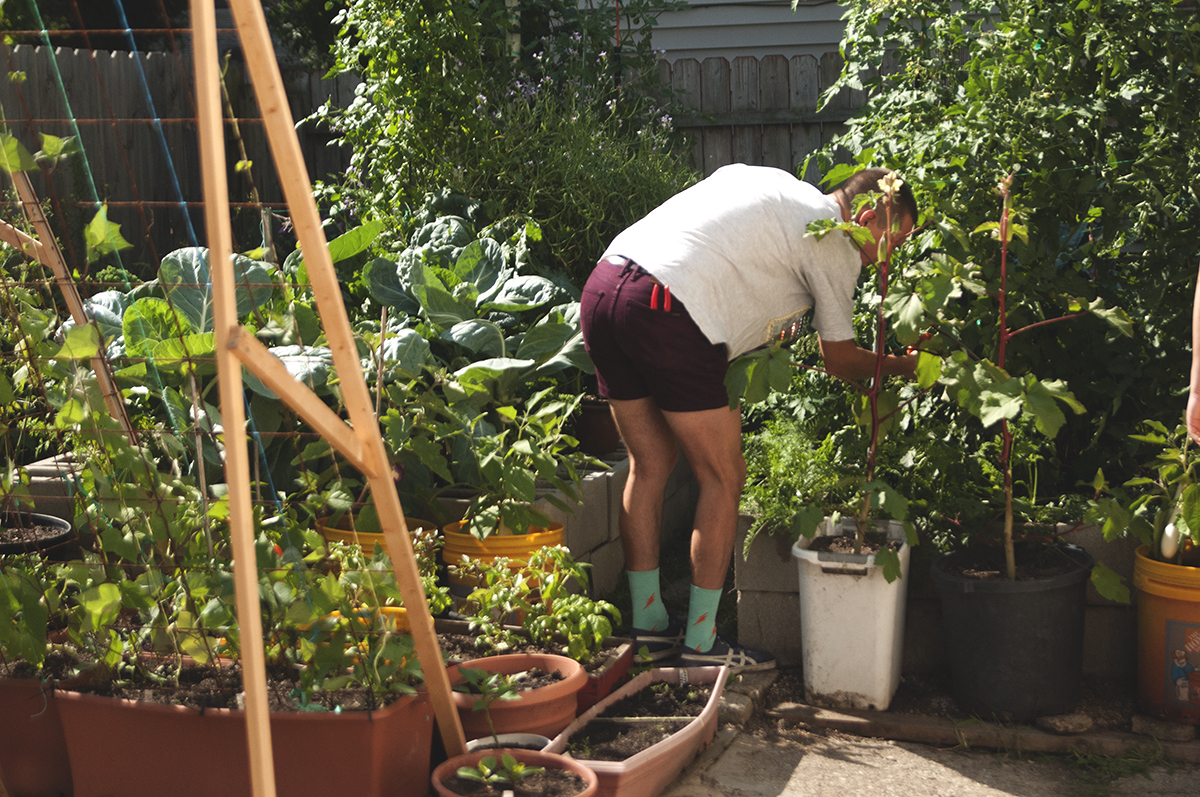
Dan has never had a traditional view of an exhibition, or a studio for that matter. For the last several years he has collaborated with Thomas Kong, an artist whose studio is completely integrated into his daily business practice. Inspired by this method of working, Dan explores the notion of labor in his own practice by participating in useful tasks at the site of exhibitions, recently testing lightbulbs and painting walls rather than making his own aesthetic choice within a space. Together with Thomas, Dan founded The Back Room, an anti-curatorial project that promotes further collaboration at the site of Thomas’s work.
I\W: How does your practice explore notions of labor? How has this evolved since coming to the US from Australia in 2014?
DM: Maybe it was more internally directed before, and more personal. The last exhibition I had in Australia before coming to Chicago was at West Space, in Melbourne. For that exhibition, Having Cheese Makes You Happy, I collaborated with my dad on one of the works—an audiobook reading of the late-90s motivational book Who Moved My Cheese?—but the centerpiece was a giant oil painting, about ten feet by eight-and-a-half feet. I learned to paint specifically to make that work, and it took about 500 hours of labor just to make the painting. It was very important at the time that I did that work myself, which I saw as a kind of substitute for wealth or money. It was this archetypal artwork—the ‘art’ version of a gold watch for long service to a company. I obviously didn’t have the money to buy a gold watch, but I had time, the ability, and the health to work.
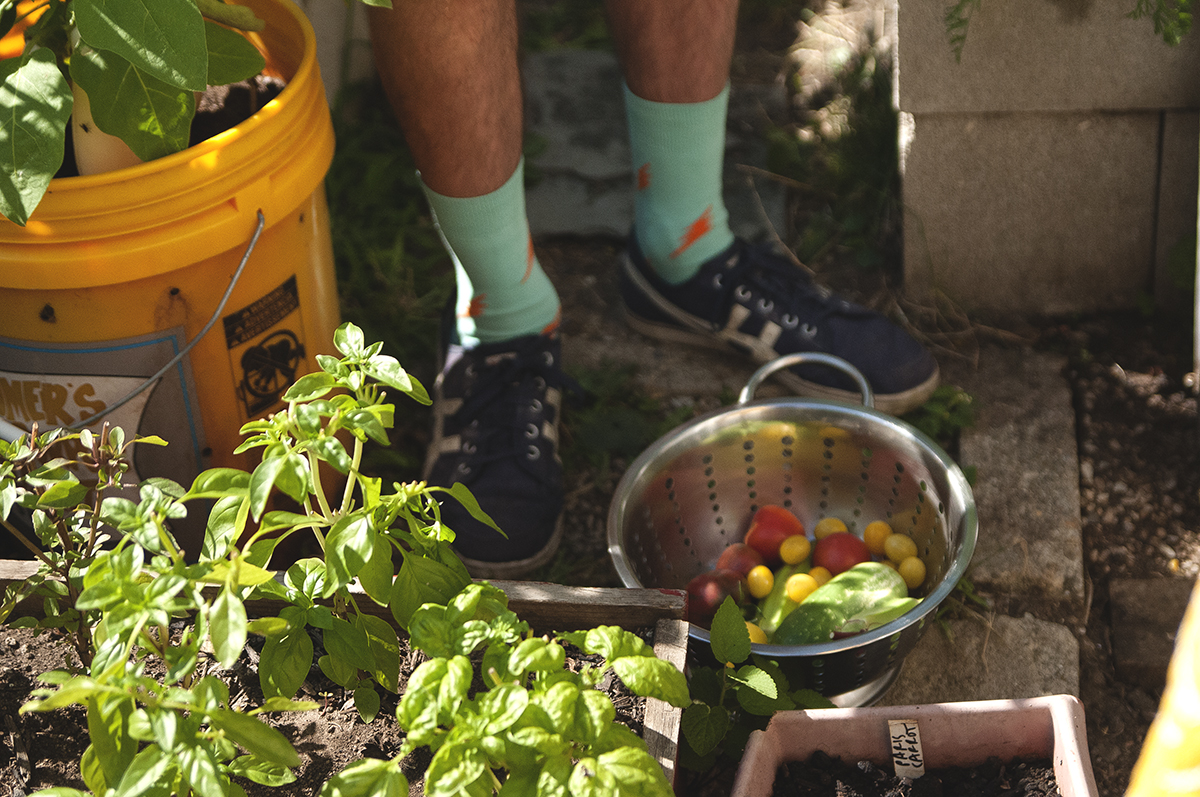
Before it seemed as if your materials were in service of your ideas, where now your practice seems to be far less material-based.
I think that is to some extent true, but I wouldn’t necessarily say what I’m doing now is less material-based. I would say that it has been less directed at making objects or exhibitions under my own name as the final outcome, but I’m actually returning to those processes now, especially after three years of working with Thomas Kong. I can’t speak about my practice without mentioning our collaboration—it’s engaged my practice almost completely for quite some time. It has involved building a very idiosyncratic environment in which art can happen, and building a collaboration that hopefully offers an alternative to the kinds of collaborations I might otherwise be expected to engage in. I think what is happening in my practice now is that I am taking the last few years of working with Thomas as the basis for thinking about new work I might produce outside of that context. That will likely mean a return to exhibition-making in the future, but recently it’s lead to smaller things—smaller actions, smaller performances—that are ways for me to think through the questions that his practice, and working with him, has raised for me.
You recently created a publication about your collaboration with Thomas for Half Letter Press. Do you view the publication as documentation or an art object?
I think it could be either or both, but it could also be just a different form of communication to discuss the project and the experiences we’ve had. It’s certainly been an important product of our work together, and writing it was also a useful way for me to work through some of the questions I had about the project. What had he and I each learned by working across a big generation gap, and gaps in culture and art education? Could the extended collaboration between the two of us, and a number of other co-conspirators, provide a model for working beyond this context? But ultimately the aim of the publication—and this is why Marc Fischer and Brett Bloom invited me to put it together—is to make more people aware of Thomas Kong’s practice and our unusual collaboration.
What sort of ideas in your larger practice is your collaboration with Thomas inspiring?
I think one of the fundamental things about seeing Thomas’s work up close is understanding the conceptual implications of the collocation of his art practice with his daily business practice, which also generates income for him. It is a total integration of those things that’s happening all of the time. So his daily labor is simultaneously useful, by making sure his rent gets paid, and useless, in the sense that he makes artworks without any such guaranteed reward. Of course it is easy to make the argument that art is useful in various ways, but it really stands in stark contrast to working we might typically consider to be a ‘job.’ Being able to witness this performance of uselessness in the same time and place as usefulness has been a continued revelation for me.
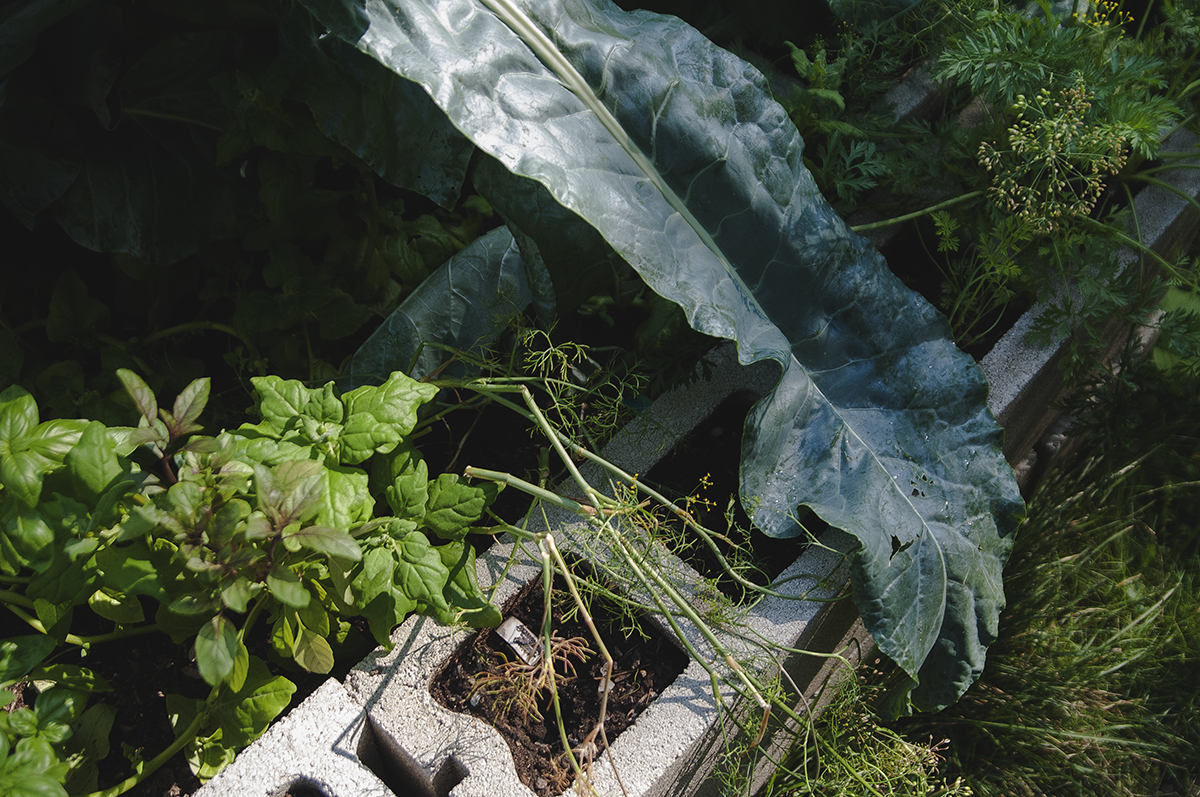
Where are you are confronting the notion useful or nonuseful work in your day-to-day life?
Lately I have been interested in doing things that may not have an immediate or artistic outcome, but go through similar processes. This kitchen garden is a good example. For me, the garden is a site in which I am doing labor that is relatively useless, but it is also a test for how long I can work on something that doesn’t necessarily have a stable outcome. Even though you could say the harvest is an outcome, it’s completely cyclical. In a few months the entire garden will be covered in snow and things will be dormant—I will have to start again next year. But I am also starting to think about collaboration in different ways, and one the of the things I have learned from my collaboration with Thomas is that I am not really interested in a singular competitive model of artistic practice. I am much more interested in ways that artists can collaborate with other entities, other forces, and other people beyond the art world to create things that are less easily reducible. Even though it sounds like a cheap metaphor, I am interested in gardening as a collaboration with other forces that are beyond my control, and the dance between chaos and order you have to do to keep things going. These garden beds along the fenceline are a combination of weeds that have been reproducing here for years, and different varieties of wildflowers that I planted from seed. There is an ongoing process of letting things grow and intervening at different points—sometimes I try to assert more control, but ultimately I am only one factor in determining whether things wither or thrive.
Can you talk about labeling art objects versus non-art objects and how those distinctions are made in your practice?
With Thomas Kong I have made a range of unclassifiable objects, like shopping baskets that are both functioning shopping baskets and functioning art objects, and business cards that are both genuine business cards and genuine art objects. Now I am thinking about how to make things with other people that can be 100% what they say on the package, and also something else that has resonance in an art context. I don’t mean to appropriate something into the art world, but more to create things, objects, actions, and so on, that sit in both realms. I am interested in objects that can be both an artwork and a thing that is completely functional in the world. I have also been thinking about how this could be integrated into a more performative practice. Recently I was on an artist residency at The Luminary in St. Louis. It is very unusual for me to work in a place that I don’t live, since most of my projects have a rhythm that demands continued attention close to where I am located. Being in St. Louis, a city where I didn’t already have ongoing relationships or projects, was a good opportunity to test these ideas in more discrete ways. The founders of the Luminary, Brea and James McAnally, are incredibly dedicated and often overworked artists, directors, writers, curators, activists and parents. When I arrived there, James picked me up from the train station and we drove to the Luminary’s building on Cherokee Street. He parked the car at the back of the building and mentioned, as an almost apologetic aside, that they hadn’t gotten around to painting the walls around the parking space since an event the previous year. Later on in my residency, I realized that I could use some of my time there to paint those walls. James ordered the paint to match the rest of the building, a very boring gray color, and I spent a day painting the walls. At the time I didn’t want to overanalyze it, but it was definitely motivated by an impulse to use my position in a formal art context to do something that was useful.
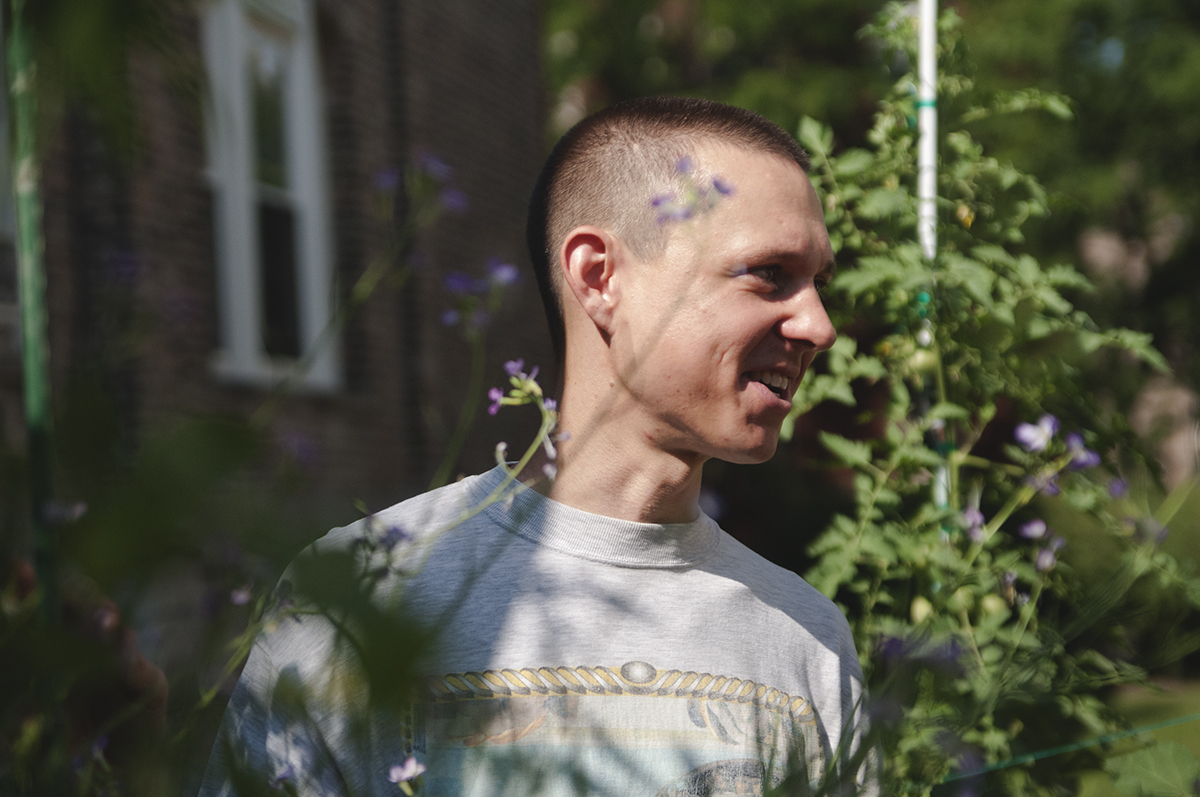
How have you applied this idea to other performative actions?
Recently I did an action at DEMO Project in Springfield, Illinois. I’ve never been really interested in standing up in front of people and ‘performing,’ but I was asked to contribute a performance along with a few other artists and poets. So my response was to ask the gallery what work needed to be done at the space—if there was anything I could do over a couple of hours that might be useful or helpful for the directors. They told me that they had all of these light fixtures and light bulbs that were donated to them, but that they never had time to test them. So I made the journey to Springfield and I did that while the other performances were happening around me. I was just up and down a ladder testing the cans and bulbs. Whether I call that a performance or not is not really relevant to me. The essential thing is that I was asked to do something in an art context, and I chose to do something useful.
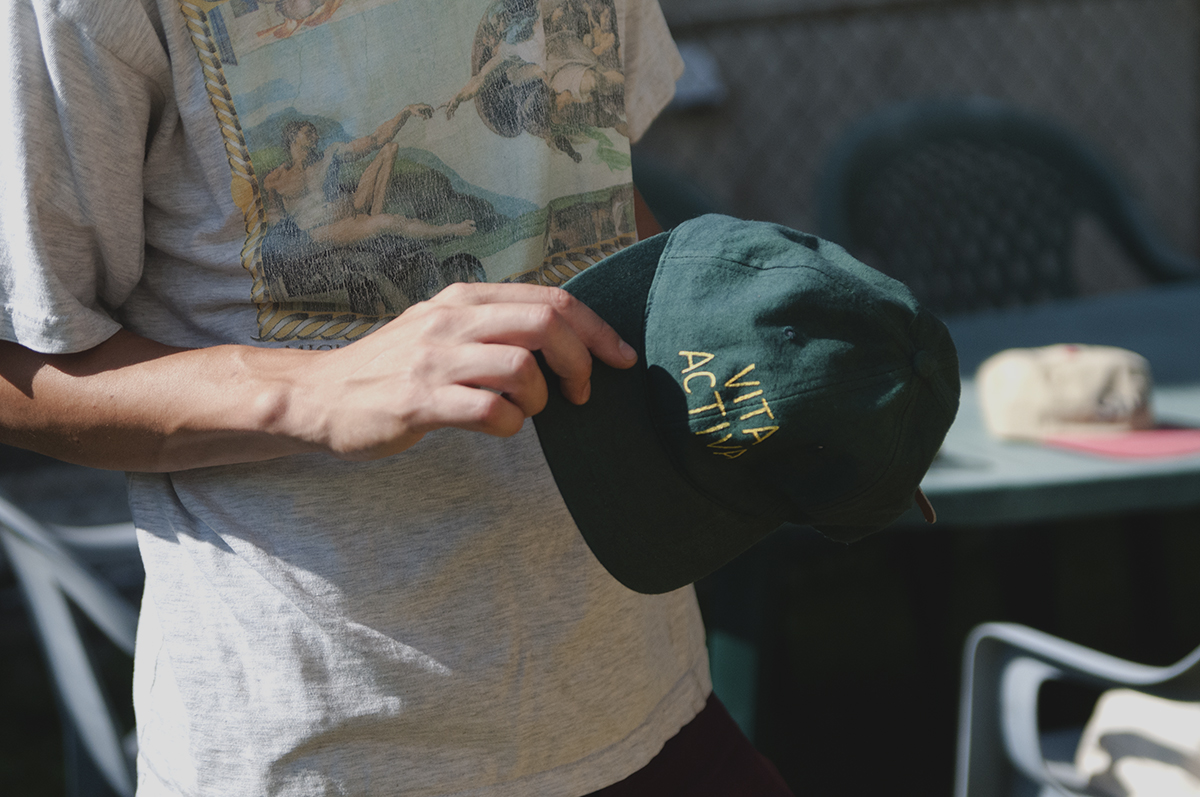
Can you describe the hats you make and sometimes wear in your actions?
A while ago I started making “studio” hats that I would wear whenever I was going to be performing artistic labor. They’re blank ball caps that I source from various places and paint onto. The idea was that I could turn any space into a studio space—I could ‘put my studio hat on.’ Or perhaps it was a way of designating my own head as the site of the studio. I have been making these and mostly giving them away to people. They can also just function propositionally—I don’t always sit down and actually wear them when I’m working as an artist. I have a friend who wears the one I made for him almost constantly, but that might be more reflective of how all-encompassing his art practice is. I have been making the “studio” hats, and also these pairs of hats that say “vita activa” and “vita contemplativa,” which are the two fundamental modes of living according to ancient philosophy, classified and given new life by Hannah Arendt in the mid-twentieth century. Actually, at DEMO Project I wore a “vita activa” hat as I was doing the action, and after I had finished I joined the audience for the final performance and put on a “vita contemplativa” hat. This is obviously a kind of dumb art joke, but as objects the hats are also meant to have this double role I’ve been thinking about—some people may have noticed them, but I think to most people I just looked like a guy wearing a ball cap.

Why do you decide to use words like ‘facilitator,’ ‘coordinator,’ or ‘co-conspirator’ instead of ‘curator’ when describing your role in the art space you created with Thomas, The Back Room at Kim’s Corner Food?
‘Curator’ sounds to me like an institutional title. Despite its etymology, it is a title that came to prominence in art discourse from inside the institution, so I always think if you are a curator, you are serving some art institution, or the institution of art itself. The Back Room for me is an attempt to have an anti- or para-institutional practice—it’s not so much an art space as collaborative project that partially functions as a site for exhibitions, performances, et cetera. But more than that, I don’t really ‘curate.’ In one sense—the etymological sense of the word ‘curate’—I am somebody who cares for Thomas’s body of work or archive, but in terms of what happens in The Back Room space, I am not a curator. In fact I aim to have an anti-curatorial approach.
Some years ago I co-founded a project in Melbourne called Plinth Projects. We had a board of artists and we took this site that was an empty pedestal about eight-feet-tall in the middle of a public park and we started programming public art projects on and around it. To varying degrees we thought of it as a curatorial project. The thing I dislike about thinking ‘curatorially’ is that you have to sit around a table and ask questions like, “Who is making good artwork right now?” Inevitably you end up playing into these competitive art world norms and making decisions about which artists are better and more valuable than others, and then fundamentally you end up serving the institutions by amplifying the voices of artists whose work has already been brought to light. I am proud of the work we did with Plinth Projects, but I am not really interested in working in that way now. With The Back Room it has been an attempt to do things differently—somebody might visit a show and tell me how much they like Thomas’s work, and then I can start a conversation with them about how their interests might intersect with the project. Or Thomas might meet an artist he finds interesting and ask me to facilitate a show with them. We’ve had a few musicians and singers who live in the neighborhood stumble on the space recently, and they’ve expressed interest in engaging the context musically, which is something I’m really excited about. For me, this is a kind of anti-curatorial approach. When I work with artists, I don’t do studio visits, and I don’t look over their shoulder. I let them have complete freedom to do what they want with the space. For me The Back Room is very much about asserting the space of the exhibition as an artist’s space, rather than a curator’s space or an institutional space.
How does the back room serve as a bridge between Thomas’s practice and your own?
Many people may not realize this, but The Back Room came into being because Thomas asked me if I could help him “start a gallery.” What it has become over the past couple of years is undoubtedly a mediation between our very different ideas about art, but there is one area where we overlap totally. He and I have talked a lot over the last couple of years about what his motivations were for wanting to have a gallery space, and they are fundamentally social—to bring people into contact with him and with each other. From the beginning I certainly shared the desire to bring people into Thomas’s orbit, but it’s taken me awhile to realize that I also see art practice primarily as an excuse to get together with other human beings—people inside and outside the artworld—in whatever capacities we can.



